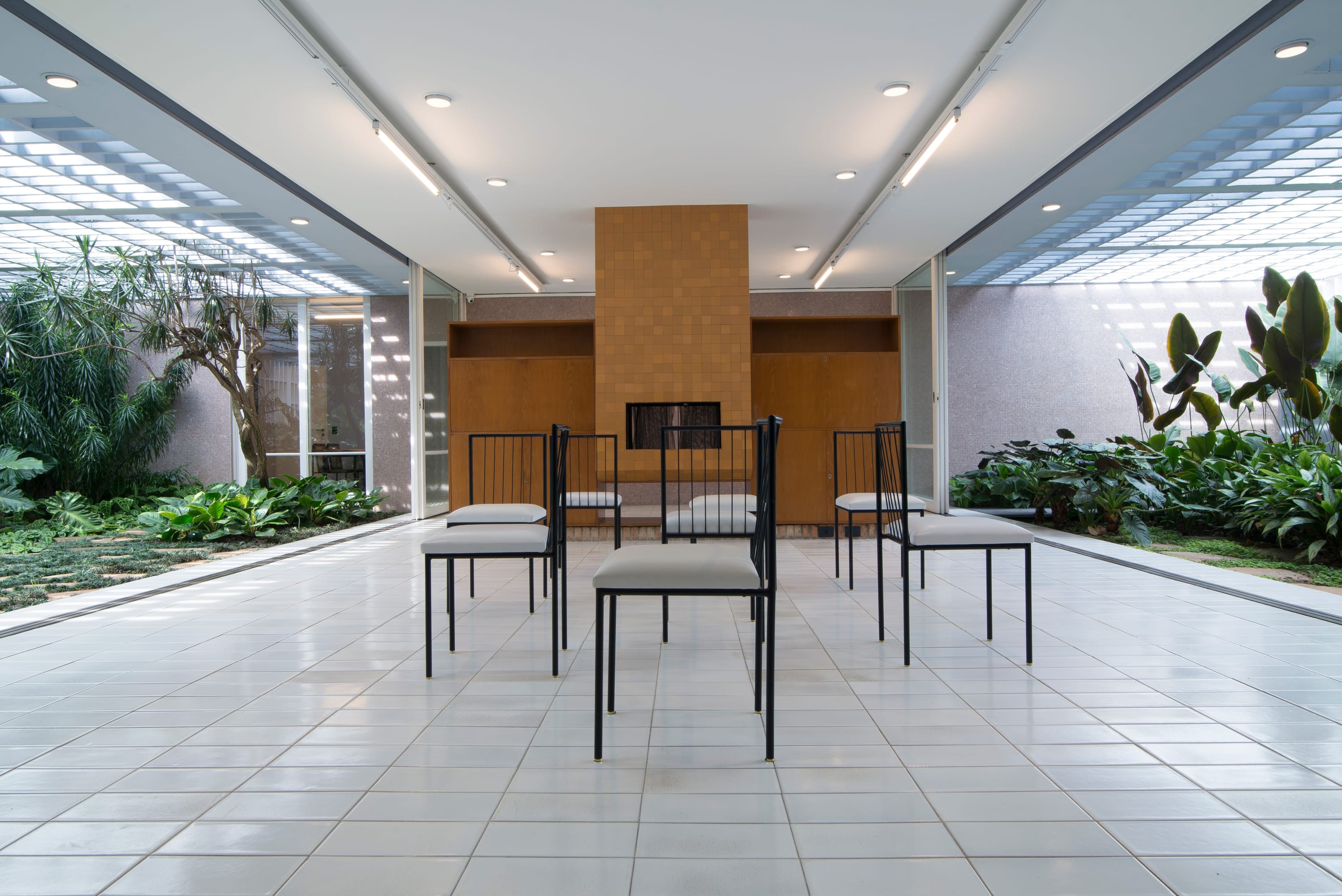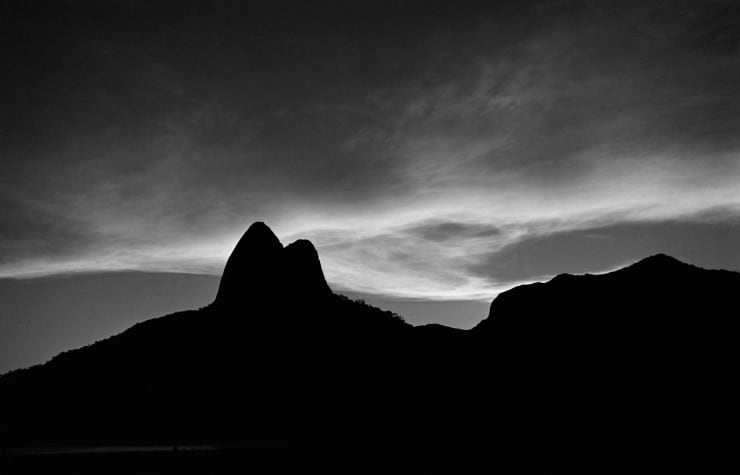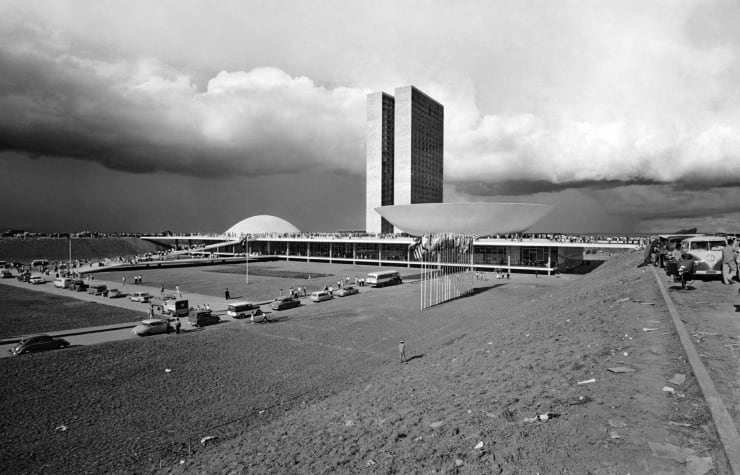-
ArtRio 2022
Sala Modernista -
GERALDO DE BARROS | THOMAZ FARKAS | WALDEMAR CORDEIRO -
-
In a room specially created to hold the historical works, the gallery is presenting artworks by Waldemar Cordeiro and Geraldo de Barros, whose experimental multidisciplinary researches espoused equilibrium to valorize the essence of shapes and colors, whether in painting, as in the case Waldemar Cordeiro’s “intuitive geometry” phase (1960–63), or in photography, as in Geraldo de Barros’s Fotoformas [Photoforms] (1949–54). Another example is provided by the series Objetos-forma [Forms/Objects], by Geraldo de Barros, which revisits the works of his participation in the 15th Bienal de São Paulo, in 1979. On this occasion it will also be possible to take another look at some artworks by Thomaz Farkas, who recorded everyday scenes in the downtowns of large cities to compose a rich corpus bearing witness to Brazilian history and social life.
-
Geraldo de Barros
1923, Xavantes, Brasil - 1998, São Paulo, BrasilGeraldo de Barros is a key name of 20th-century Brazilian art. Combining his first studies on painting with a later interest in photography, he pushed the envelope of the traditional photographic processes, questioning the classic rules of composition. Geraldo de Barros took a formal concern – as clearly seen in Brazilian concretism, in which participated intensely – and managed to merge this with his social concerns, leading him to approach the industrial processes in his work, dealing coherently with geometric constructions, reproducibility, the socialization of art, the theory of form and industrial design.
At the age of 26, Geraldo de Barros participated in the creation of the photography course and darkroom at the Museu de Arte de São Paulo (Masp), where he presented the exhibition Fotoformas, in 1950. The artist was also one of the most active members of the Foto Cine Clube Bandeirante, which marked the experimentation of photography in Brazil. In 1951, he participated in the Hochschule für Gestaltung (HfG – School of Design) in Ulm, Germany. He was also one of the founders of Grupo Ruptura (1952) and of Grupo Rex (1966), and participated in the 1st, 2nd, 9th, 15th and 21st editions of the Bienal de São Paulo, and in the 1986 Venice Biennale (Italy). Geraldo de Barros’s works have participated posthumously in various national and international exhibitions. In 2014, Instituto Moreira Salles, in Rio de Janeiro, organized a retrospective of the artist, and in the following year the same exhibition was held at Sesc Belenzinho, in São Paulo. In 2017, the Fundação Arpad Szenes-Vieira da Silva in Lisbon (Portugal) and the Document Gallery, in Chicago (USA), held solo shows featuring works by the artist, followed by others at Side Gallery, in Barcelona (Spain), in 2018, and Kunst- und Kulturstiftung Opelvillen, in Rüsselsheim (Germany), in 2019. More recently, in 2021, Itau Cultural featured a solo exhibition, while in 2022, the Museé d'Art Moderne et Contemporain – MAMCO, in Switzerland, held the largest retrospective of the artist in Europe. His work figures in important collections such as those of the Fundação de Arte Cisneros Fontanals, the Art Fund of the State of Geneva, the Fundação Bienal de São Paulo, Instituto Inhotim, the Ludwig Museum, the Max Bill Foundation, the Max Art Museum, the Museu de Arte Contemporânea of São Paulo, the Museu de Arte Moderna of São Paulo, the Museu de Belas Artes, the Museu de Arte de São Paulo, MoMA, Tate Modern, Photographer’s Gallery, the Pinacoteca de São Paulo, the Museo de Arte Latinoamericano de Buenos Aires, and others.
-
-
 Ruptura, Luciana Brito Galeria, São Paulo, Brazil, 2018
Ruptura, Luciana Brito Galeria, São Paulo, Brazil, 2018 -
"On the Recovery of Some Form-Objects of Concrete Art"
-
Photo: Edouard Fraipont
-
-
-
-
Waldemar Cordeiro
1925, Rome, Italy – 1973, São Paulo -
Waldemar Cordeiro was a key figure in the development of concrete art, a vanguard movement essential for the transition of modern art to contemporary art, which came to define 20th-century Brazilian art. Besides being a pioneer in computer art as early as the 1960s, Waldemar Cordeiro developed and implemented important landscaping designs in Brazil. In his interdisciplinary research he defended painting in its essence, with self-supporting basic colors and lines, without the backing of figurative representation. He was notable for his objective and rational art, very much associated to his theoretical studies, as well as for his investigation of industrial materials and elements. Cordeiro worked for an art accessible to all, seeking a collective sense that was also aligned with technology, to design and to landscaping. His research in art was always coupled with a social and political concern.
Waldemar Cordeiro studied at the Academy of Fine Arts of Rome (1938) and at the Tasso Lyceum of Rome (1945). In 1949, he took up residence in Brazil. He participated in the inaugural show of the Museu de Arte Moderna of São Paulo (MAM-SP), Do figurativismo ao abstracionismo (1949), and in the 1st Bienal de São Paulo (1951). He was also one of the organizers of the show Ruptura, also at MAM-SP (1952), and of Arteônica, at Fundação Armando Alvares Penteado, FAAP-SP (1971). Solo shows of his work have been held at noteworthy venues, including MAM-RJ/SP, CCSP, Buffalo University (USA), MAC-SP, Itaú Cultural, São Paulo, and the Paço Imperial, Rio de Janeiro. Group shows featuring his work have been held at important venues which include the Walker Art Center (USA), the Pinacoteca de São Paulo, the Museum of Fine Arts Houston (USA), the Museum of Modern Art (MoMA), New York (USA), CCBB-SP/RJ, Goethe-Institut, New York (USA), the Museo Nacional Centro de Arte Reina Sofía, Madrid (Spain), Instituto Tomie Ohtake, São Paulo, the Bienal de São Paulo (2012, 1975, 1973, 1969, 1967, 1965, 1963, 1961, 1959, 1957, 1955, 1953 and 1951), and the Biennial of Nuremberg (Germany). Waldemar Cordeiro’s works figure in many prominent collections, including those of the Cisneros Fontanals Art Foundation (USA), the Museu de Arte Contemporânea of the University of São Paulo, the Patricia Phelps de Cisneros Collection (USA), the Pinacoteca de São Paulo, the Museum of Modern Art (MoMA) of New York (USA), the Museum of Fine Arts, Houston (USA), and ZKM Museum (Germany).
-
-
Thomaz Farkas
1924, Budapest, Hungary – 2011, São Paulo, Brazil. -
Thomaz Farkas’s first authorial series are associated with his experience with the Foto Cine Clube Bandeirante, where the artist contributed to the advances of Brazilian photography. His practice was concentrated on creative technical resources, rather than on pictorialism or the traditional genres dealt with in painting (portrait, landscape, etc.). In his photographs, Farkas recorded everyday urban scenes, architecture and cityscapes, through geometric compositions and unusual angles. The artist’s work not only gathers everyday scenes, but also composes a rich documentary source concerning Brazil’s history and social scenario.
Residing in São Paulo from the age of six onward, Thomaz Farkas was the son of the founder of Fotoptica, a pioneering company in the commercialization of photographic equipment in Brazil. He received his PhD from the School of Communication and Arts of USP (1973). He held solo shows at important institutions including the Museu da Imagem e do Som (2019, São Paulo), the Instituto Moreira Salles (2011, São Paulo), the Pinacoteca de São Paulo (2005), the Centro Português de Fotografia (2000, Lisbon, Portugal), Masp (1949, 1997), and MAM-SP (1949). He participated in many group shows, held at prominent venues including MoMA-NY (2021, USA), Museo Jumex (2018, Mexico), Tate Modern (2018, London, England), the Museum of Contemporary Art (2017, San Diego, USA), Itaú Cultural (2017, São Paulo), The Photographer’s Gallery (2016, New York, USA), the Fundação Calouste Gulbenkian (2015, Paris, France), and the Museum für Fotografie (2012, Berlin, Germany). Farkas was also elected four times as Brazil’s representative in the Photographic Society of America, and was a key figure in the creation of the departments of photography of Masp and of MAM-SP. His work figures in the collections of MoMA-NY (USA), Masp, MAM-SP/RJ, Instituto Moreira Salles, and Tate Modern (England).
-

-






















